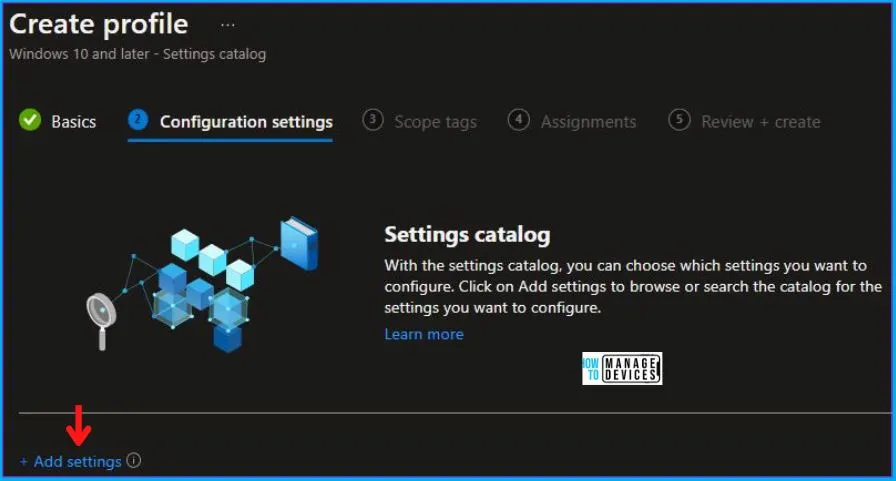This post will help in understanding and setting the Configure Offer Remote Assistance Policy Using Intune. Here we are going to implement this policy using Intune’s Configuration Profiles. This policy’s main aspect is providing knowledge about configuring the Offer Remote Assistance Policy Using Intune.
Configure Offer Remote Assistance Policy configuration option enables you to control the activation or deactivation of Offer (Unsolicited) Remote Assistance on the computer. Enabling this policy allows users on the computer to seek assistance from their corporate technical support team using Offer (Unsolicited) Remote Assistance. Conversely, disabling this policy prevents users from accessing assistance through this method.
When you enable this policy, you gain two options for permitting helpers to offer Remote Assistance: “Allow helpers only to view the computer” or “Allow helpers to control the computer remotely.” While configuring this policy, you can also specify the users or user groups authorized to provide remote assistance.
Additionally, if you enable this policy, it’s advisable to activate firewall exceptions to facilitate Remote Assistance communications. The required firewall exceptions for Offer (Unsolicited) Remote Assistance vary depending on the Windows version in use:
For Windows Vista and later, enable the Remote Assistance exception for the domain profile. The exception should encompass: Port 135:TCP %WINDIR%\System32\msra.exe %WINDIR%\System32\raserver.exe.

- Configure Solicited Remote Assistance Policy using Intune
- RPC Endpoint Mapper Client Authentication Policy using Intune
Windows CSP Details UnsolicitedRemoteAssistance
We will see Windows CSP Details for this Policy setting UnsolicitedRemoteAssistance. This policy configuration serves as a means to manage the activation or deactivation of Offer (Unsolicited) Remote Assistance on the computer. By enabling this policy, you grant users on the computer the ability to request assistance from their corporate technical support team via Offer (Unsolicited) Remote Assistance.
Conversely, disabling this policy precludes users from seeking help through this method. In the absence of a specific policy configuration, users won’t be able to employ Offer (Unsolicited) Remote Assistance for support from their corporate technical support staff.
CSP URI – ./Device/Vendor/MSFT/Policy/Config/RemoteAssistance/UnsolicitedRemoteAssistance

Configure Offer Remote Assistance Policy using Intune
To Configure Offer Remote Assistance Policy Using Intune, follow the steps stated below:
- Sign in to the Intune Admin Center portal https://intune.microsoft.com/.
- Select Devices > Windows > Configuration profiles > Create a profile.
In Create Profile, I select Windows 10 and later in Platform, and select Profile Type as Settings catalog. Click on the Create button.
| Platform | Profile Type |
|---|---|
| Windows 10 and later | Settings Catalog |

On the Basics tab pane, I provide a name for the policy as “Configure Offer Remote Assistance Policy.” Optionally, if you want, you can enter a policy description and proceed by selecting “Next.”

Now in Configuration Settings, click Add Settings to browse or search the catalog for the settings I want to configure.

In the Settings Picker windows, I searched for the keyword Remote Assistance, I found the category Administrative Templates\System\Remote Assistance and selected this.
When I select that option as stated above, I see the sub-category Configure Offer Remote Assistance. After selecting that, click the cross mark at the right-hand corner, as shown below.

I kept the Configure Offer Remote Assistance as Disabled and clicked on Next to continue.

Using Scope tags, you can assign a tag to filter the profile to specific IT groups. One can add scope tags (if required) and click Next to continue. Now in Assignments, in Included Groups, you need to click on Add Groups, choose Select Groups to include one or more groups, and click Next to continue.

In the Review + Create tab, I review settings. After clicking on Create, changes are saved, and the profile is assigned.

Upon successfully creating the “Configure Offer Remote Assistance Policy,“ notification will appear in the top right-hand corner, confirming the action. You can also verify the policy’s existence by navigating to the Configuration Profiles list, where it will be prominently displayed.
Your groups will receive your profile settings when the devices check in with the Intune service. The Policy applies to the device.
Intune Report for Configure Offer Remote Assistance Policy
From the Intune Portal, you can view the Intune settings catalog profile report, which provides an overview of device configuration policies and deployment status.
To track the assignment of the policy, you need to select the relevant policy from the Configuration Profiles list. Reviewing the device and user check-in status lets you determine if the policy has been successfully applied. If you require more detailed information, you can click on “View Report” to access additional insights.

Intune MDM Event Log
To verify the successful implementation of String or integer policies on Windows 10 or 11 devices through Intune, you can leverage event IDs 813 and 814. These event IDs provide valuable insights into the application status of the policy as well as the specific value assigned to the policy on those devices. In the case of this particular policy, the value is a String and is linked to the event ID 814.
By analyzing these event IDs, you can gain a clear understanding of the policy’s application status and the corresponding value associated with it on the devices in question.
To confirm this, you can check the Event log path – Applications and Services Logs – Microsoft – Windows – Devicemanagement-Enterprise-Diagnostics-Provider – Admin.
MDM PolicyManager: Set policy string, Policy: (
